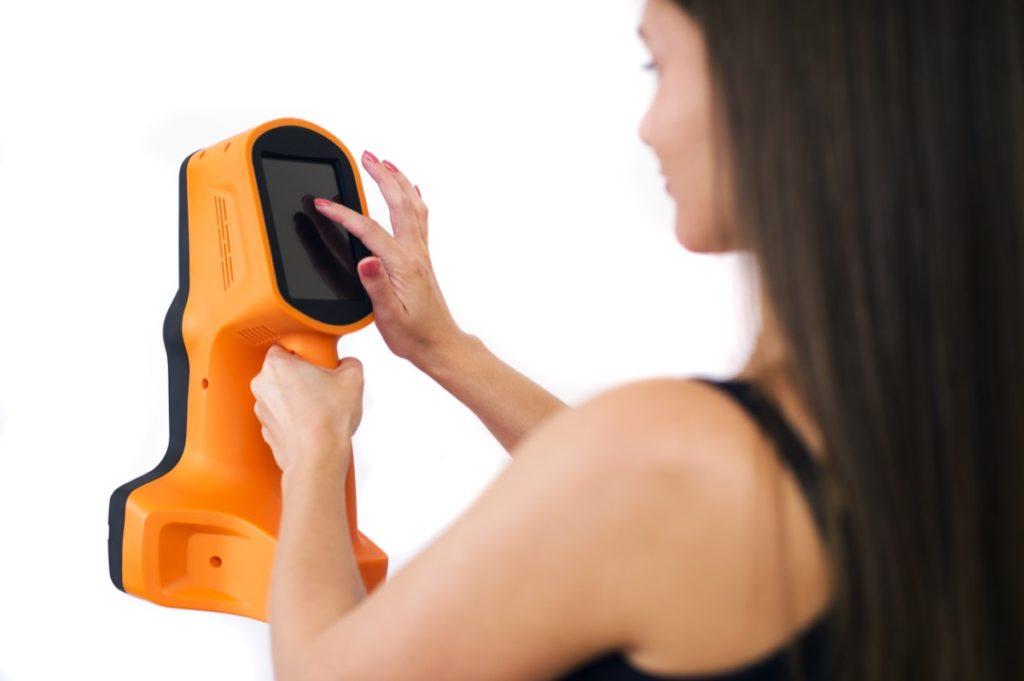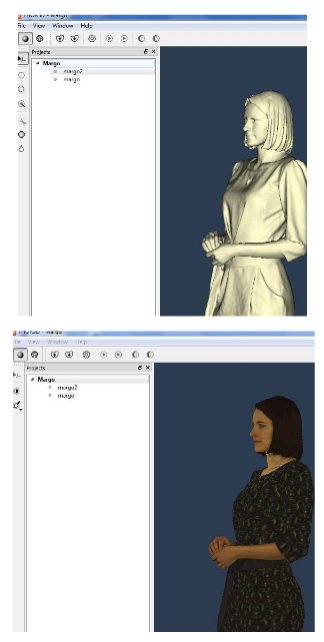If you’re at all familiar with the 3D scanning industry, chances are you’ve heard of Artec 3D, the Luxembourg-based producer of professional-grade handheld 3D scanning systems. The company has spawned a number of innovative ventures and collaborations with their 3D scanning technology. Their recent projects with the 3D printing marketplace Threeding, for instance, have helped preserve Greek artifacts and endangered bird species. Although the company has certainly made a name for itself through its 3D scanning technology, it seems that competition may be on a horizon. One startup comprised of ex-Artec employees, called Thor3D, is looking to take the handheld scanning market by storm.
 The Moscow-based 3D scanning startup, which is headed by CEO Anna Zevelyov, is looking to challenge Artec 3D with their own handheld 3D scanner, simply named the Thor 3D Scanner. They’ve worked diligently to produce a device that is capable of capturing almost any object, having recently developed a marker system for objects that aren’t geometrically rich, like a car roof or flat airplane wing. To get a better idea of what Thor3D’s handheld scanning technology entails, their team provided us with a comprehensive look at their scanner.
The Moscow-based 3D scanning startup, which is headed by CEO Anna Zevelyov, is looking to challenge Artec 3D with their own handheld 3D scanner, simply named the Thor 3D Scanner. They’ve worked diligently to produce a device that is capable of capturing almost any object, having recently developed a marker system for objects that aren’t geometrically rich, like a car roof or flat airplane wing. To get a better idea of what Thor3D’s handheld scanning technology entails, their team provided us with a comprehensive look at their scanner.
 The handheld scanner weighs a hefty 1.8kg, which is heavier than most other handheld scanners on the market, but this seems mostly due to the excess of internal components needed to make the Thor 3D Scanner completely wireless. Externally, the casing and screen seem to be of moderate quality, and also feature a unique power button, which is activated or turned off with the swipe of a finger across the scanner’s touchscreen display. Although the scanner itself is a bit clunky, the wireless feature helps to create a more seamless scanning experience. The Thor 3D Scanner essentially functions the same way as any other handheld scanner does: you simply take the device in your hand, point at the object, and walk around it.
The handheld scanner weighs a hefty 1.8kg, which is heavier than most other handheld scanners on the market, but this seems mostly due to the excess of internal components needed to make the Thor 3D Scanner completely wireless. Externally, the casing and screen seem to be of moderate quality, and also feature a unique power button, which is activated or turned off with the swipe of a finger across the scanner’s touchscreen display. Although the scanner itself is a bit clunky, the wireless feature helps to create a more seamless scanning experience. The Thor 3D Scanner essentially functions the same way as any other handheld scanner does: you simply take the device in your hand, point at the object, and walk around it.
According to Thor3D, the scanner captures up to 10 frames per second, the exact number of which is dependent on the amount of data in the object being scanned. There are certainly scanners on the market that capture objects at a higher frame-rate, but the scanner’s large field of view does compensate for it. To showcase their scanner in use, the Thor3D team performed a number of full-body scans on a colleague. The scanner itself was able to capture the subject in pristine quality, even managing to nail down her hair, which is oftentimes an issue for many other scanning devices. Still, the subject seemed to have slight issues with the scanner’s flash, which she admitted became a bit unbearable after the third consecutive body scan. Thor3D would likely benefit by giving their users more control over the brightness of the flash.
After scanning one of their colleagues, Thor3D went on to demonstrate their marking system by scanning a car, which is a perfect example of an object with lacking geometric features. According to Thor3D, the car took approximately 15 minutes to scan in its entirety, 5 minutes to scan the sides and 10 minutes to scan the roof. With the larger markers, the 3D scanner was able to pick up on the subtle detailing of the car. Although 3D scanning the car did take some time, the handheld and wireless nature of the Thor 3D Scanner certainly provides a more convenient experience than a stationary scanner would.
 Altogether, Thor3D seems to have immense pride in their product, but also admit that they have a lot more work to do to overtake Artec 3D as the go-to handheld 3D scanning company. If the startup can key in on providing higher resolution and a way to scan smaller objects, while reducing the overall weight of their handheld device, they may just have a breadwinning scanner on their hands. It seems that Thor3D will continue to improve their system as they go along, as they’ve recently made vast improvements to their software, such as the addition of a feature to automatically remove markers from your scan data. They still have a few kinks to smoothe out, but the Thor3D team seems set on doing just that, and eventually providing the industry-standard in professional-grade handheld 3D scanners. The cost of their scanner varies between countries due to taxes, import tariffs, labor costs, but those interested in Thor3D’s technology can inquire through their website. Discuss further in the Thor3D Scanning forum over at 3DPB.com.
Altogether, Thor3D seems to have immense pride in their product, but also admit that they have a lot more work to do to overtake Artec 3D as the go-to handheld 3D scanning company. If the startup can key in on providing higher resolution and a way to scan smaller objects, while reducing the overall weight of their handheld device, they may just have a breadwinning scanner on their hands. It seems that Thor3D will continue to improve their system as they go along, as they’ve recently made vast improvements to their software, such as the addition of a feature to automatically remove markers from your scan data. They still have a few kinks to smoothe out, but the Thor3D team seems set on doing just that, and eventually providing the industry-standard in professional-grade handheld 3D scanners. The cost of their scanner varies between countries due to taxes, import tariffs, labor costs, but those interested in Thor3D’s technology can inquire through their website. Discuss further in the Thor3D Scanning forum over at 3DPB.com.
[Source: Thor 3D]
Subscribe to Our Email Newsletter
Stay up-to-date on all the latest news from the 3D printing industry and receive information and offers from third party vendors.
You May Also Like
Why Corrosive Resistant Materials Are Important to the Success of 3D Printing Across Industries
The adoption of additive manufacturing (AM) is accelerating across many major industries. As this technological shift unfolds, the importance of corrosion resistance has emerged as a challenge for 3D printing...
America Makes Announces IMPACT 2.0: $6.6M in New 3D Printing Funding
America Makes, the Manufacturing Innovation Institute (MII) based in Youngstown, Ohio, has announced IMPACT (Improvement in Manufacturing Productivity via Additive Capabilities and Techno-Economic Analysis) 2.0, a project call which will...
3D Printing Webinar and Event Roundup: April 14, 2024
We’re starting off the week’s 3D printing webinars and events at ASTM AMCOE’s 11th Snapshot Workshop and MACH Exhibition. Stratasys continues its advanced training courses, SME is holding a virtual...
AMUK Welcomes Airframe Designs as British 3D Printing Industry Grows
While the UK is not the hub for 3D printer and materials manufacturers as other nations, the country continues to excel at the research, development, and application of additive manufacturing...































